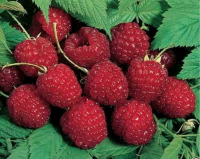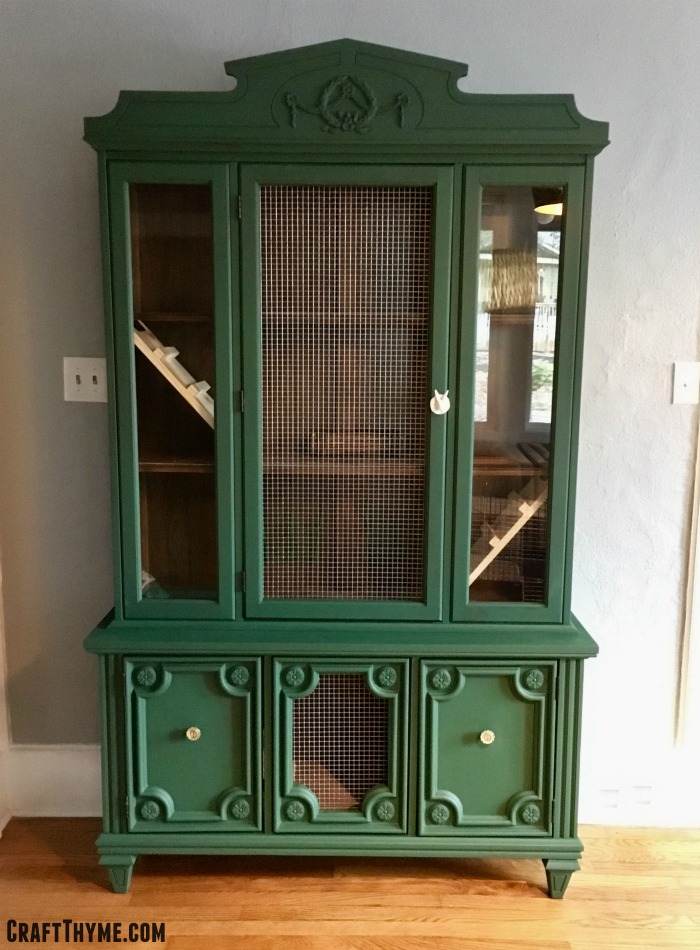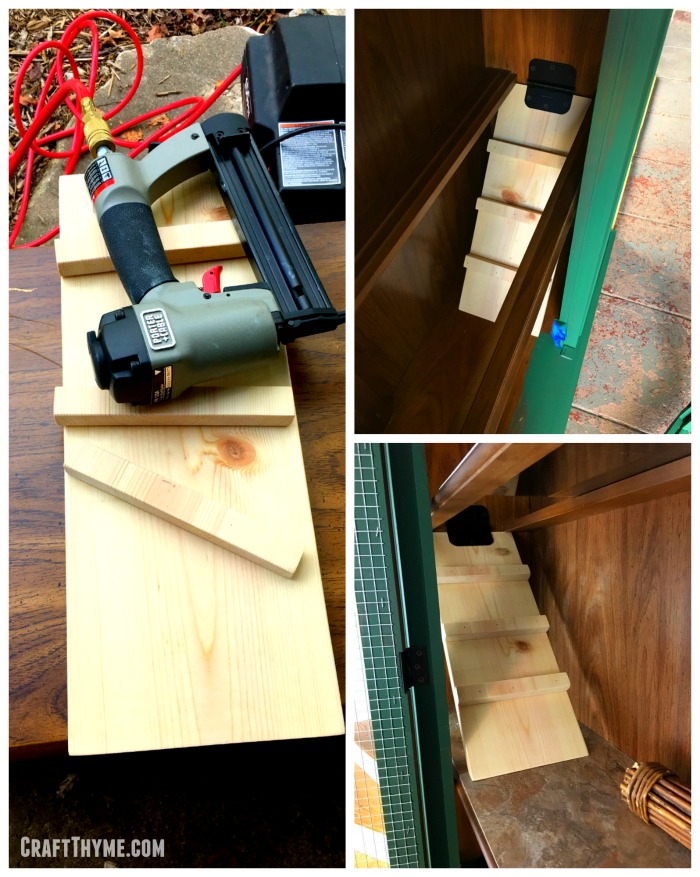
It started with a friend pointing out a sale on blueberries. Our response: “Oh we have 13 blueberry bushes”. Their response was, “Oh, they also have raspberries.” Check.
Blackberries?
Check.
Strawberries?
Check.
How many berries do you grow?
Here at Craft Thyme we have 14 types of berries currently growing on our property! Mostly because we love berries. And just for the record I am calling berries anything with small fruits. We aren’t being all scientific and taxonomic up in here.
Yes, it may be shocking but there are well over 14 different types of perennial berries you can grow in temperate zones. Best part perennial berries are pretty much the gardeners best friend. They are easy, fit in even small yards, resist tons of pests, require little care, and show up again and again. Other than potentially fighting off the neighborhood kids or birds your crops are kind of a given. Especially on some of these lesser known varieties, which seem to have better luck with the wildlife.
So what type of perennial berries can you grow in your garden space? Here is a list of perennial berries. Below are the ones I am currently growing and a further list of more uncommon berries worth exploration! All in all I have researched dozens of varieties of berries and listed 29 perennial ones below. I’m also kinda wordy so I had to highlight a few of my favorites with some affiliate links in case you want to buy some for yourself!
Perennial Berries
 Blackberry: (Zones 4-9) I picked up a thornless unnamed variety of blackberry in 2004 and planted it by my back porch. I did literally nothing. It had sun and whatever rain fell. I never fertilized it, I sometimes cut out dead limbs in the spring and wove new vines in the stair railing. But that, folks, was that. In three years I had vines running 10 feet up my stairs and so many blackberries I couldn’t eat them all. It smelled like a winery under the bush from the multitude of fermenting blackberries. From that random purchase I was hooked. Every house I have owned is left with a thornless blackberry somewhere. Arapaho and Apache have been some of my easy favorites.
Blackberry: (Zones 4-9) I picked up a thornless unnamed variety of blackberry in 2004 and planted it by my back porch. I did literally nothing. It had sun and whatever rain fell. I never fertilized it, I sometimes cut out dead limbs in the spring and wove new vines in the stair railing. But that, folks, was that. In three years I had vines running 10 feet up my stairs and so many blackberries I couldn’t eat them all. It smelled like a winery under the bush from the multitude of fermenting blackberries. From that random purchase I was hooked. Every house I have owned is left with a thornless blackberry somewhere. Arapaho and Apache have been some of my easy favorites.
 Fruiting Rose aka Rosa Rugosa (Zones 3-9) I’m not sure this counts as a berry, but we just planted one of these roses. They are supposedly pretty maintenance free, unlike the typical fancy rose, and make delicious, vitamin C packed rose hips.
Fruiting Rose aka Rosa Rugosa (Zones 3-9) I’m not sure this counts as a berry, but we just planted one of these roses. They are supposedly pretty maintenance free, unlike the typical fancy rose, and make delicious, vitamin C packed rose hips.
 Strawberries (Zones 3-9)
Strawberries (Zones 3-9)
Blue Berry High Bush (Zones 4-7) 
 Blueberry Low Bush (Zones 2-8) Yes, blueberries as groundcover do exist. Lowbush blueberries range from 6″ to 2′ tall, though you can trim them to keep them very low to the ground. In our local mountains you can find many of these wild low blueberries for natural picking. However, I purchased a named cultivar. What name? Who knows, I have the tag somewhere but I am wAAAAAAAy behind documenting my garden journal for this year. *sigh* Anywho, we are trialing these by the pond next to the cranberries since they like similar conditions.
Blueberry Low Bush (Zones 2-8) Yes, blueberries as groundcover do exist. Lowbush blueberries range from 6″ to 2′ tall, though you can trim them to keep them very low to the ground. In our local mountains you can find many of these wild low blueberries for natural picking. However, I purchased a named cultivar. What name? Who knows, I have the tag somewhere but I am wAAAAAAAy behind documenting my garden journal for this year. *sigh* Anywho, we are trialing these by the pond next to the cranberries since they like similar conditions.
 Goji Berries (Zones 3-10) Why? Well they aren’t exactly my taste, but hey everyone else in the world counts them as a superfood, so I have a couple plants knocking about the yard. Small bushes with little upkeep so there they stay.
Goji Berries (Zones 3-10) Why? Well they aren’t exactly my taste, but hey everyone else in the world counts them as a superfood, so I have a couple plants knocking about the yard. Small bushes with little upkeep so there they stay.
 Honeyberry (Zones 2-7)
Honeyberry (Zones 2-7)
 Mulberry (Zones 4-9) FYI a groundhog will eat each and every leaf off a mulberry tree if you happen to have it in a pot they can knock over… Just saying… Oddly it will survive this defoliation, so there is that.
Mulberry (Zones 4-9) FYI a groundhog will eat each and every leaf off a mulberry tree if you happen to have it in a pot they can knock over… Just saying… Oddly it will survive this defoliation, so there is that.
 Elderberry (Zones 3-8) Hey, guess what?! Groundhogs like these too! We got a few berries last year, but added more plants this year. I have them in a shady location to help deal with excess rainwater runoff. Since they aren’t in the sun I don’t ever expect to have scads of these berries, but what I do get I plan to make an extract to use in cocktails. Cause we live in Asheville, and that’s the hispter kind of shit you do.
Elderberry (Zones 3-8) Hey, guess what?! Groundhogs like these too! We got a few berries last year, but added more plants this year. I have them in a shady location to help deal with excess rainwater runoff. Since they aren’t in the sun I don’t ever expect to have scads of these berries, but what I do get I plan to make an extract to use in cocktails. Cause we live in Asheville, and that’s the hispter kind of shit you do.
 Raspberry (Zones 3-9) This might be my husband and mine favorite type of berry. Do you know raspberries quit ripening when you pick them? So yeah, if you want the taste of an amazing, sweet, fragrant raspberry unlike any you have had in the grocery store you are going to need to grow your own. On that note, I’m not a huge fan of proprietary plants. It just irks the shit out of me when you try and slap a trademark on life. That being said, I am also a sucker for clearance plants. A couple of years ago I picked up a trademarked thornless raspberry called Raspberry Shortcake… Yes, I hate myself sometimes too… Anyway I stuck this plant in the dirt and got lots of green leaves. It was a cute, tiny, compact, thornless bush, but it was just a bush. No raspberries to be seen. Only reason I haven’t dug the damn thing up was because I had other things going on in the yard. So it stayed there. Staying compact, looking cute, and doing nothing. Then this year! Holy mother of berries. We get two complete handfuls of the largest, firmest, and juiciest raspberries I have ever seen every. single. day. For almost a month now! It has outperformed my traditional vines but untold amounts and has had virtually zero pests and literally no love from me. I will be seeking these out and adding them all over the place from this point on.
Raspberry (Zones 3-9) This might be my husband and mine favorite type of berry. Do you know raspberries quit ripening when you pick them? So yeah, if you want the taste of an amazing, sweet, fragrant raspberry unlike any you have had in the grocery store you are going to need to grow your own. On that note, I’m not a huge fan of proprietary plants. It just irks the shit out of me when you try and slap a trademark on life. That being said, I am also a sucker for clearance plants. A couple of years ago I picked up a trademarked thornless raspberry called Raspberry Shortcake… Yes, I hate myself sometimes too… Anyway I stuck this plant in the dirt and got lots of green leaves. It was a cute, tiny, compact, thornless bush, but it was just a bush. No raspberries to be seen. Only reason I haven’t dug the damn thing up was because I had other things going on in the yard. So it stayed there. Staying compact, looking cute, and doing nothing. Then this year! Holy mother of berries. We get two complete handfuls of the largest, firmest, and juiciest raspberries I have ever seen every. single. day. For almost a month now! It has outperformed my traditional vines but untold amounts and has had virtually zero pests and literally no love from me. I will be seeking these out and adding them all over the place from this point on.
 Cranberry (Zones 2-7) I was chocked to learn you can grow cranberries without a bog! So much so I wrote a whole post about how to grow cranberries here.
Cranberry (Zones 2-7) I was chocked to learn you can grow cranberries without a bog! So much so I wrote a whole post about how to grow cranberries here.
 Serviceberry aka Juneberry (Zones 4-8) Finally tasted these this year and they are amazing! Sweeter and larger than a blueberry.
Serviceberry aka Juneberry (Zones 4-8) Finally tasted these this year and they are amazing! Sweeter and larger than a blueberry.
 Lignonberry (Zones 2-8) It looks like a tiny boxwood. Which is really kind of a selling point in my humble opinion.
Lignonberry (Zones 2-8) It looks like a tiny boxwood. Which is really kind of a selling point in my humble opinion.
 Boysenberry (Zones 6-9) This crossed plant is a new one for us this year. I’m hoping we love it as much as all our other berries. So far growth has been easy peasy.
Boysenberry (Zones 6-9) This crossed plant is a new one for us this year. I’m hoping we love it as much as all our other berries. So far growth has been easy peasy.
 Kiwiberry (Zones 3-9) Not on my easy list. I know I said berries are easy… But really not this one. I have an entire article about kiwi berries, but they take years to produce, are super specific on site needs, and frankly are a challenge for me as an experienced gardener. If I ever reliably crack the kiwiberry nut I’ll let you in on the secret. Until then just be prepared for a challenging plant.
Kiwiberry (Zones 3-9) Not on my easy list. I know I said berries are easy… But really not this one. I have an entire article about kiwi berries, but they take years to produce, are super specific on site needs, and frankly are a challenge for me as an experienced gardener. If I ever reliably crack the kiwiberry nut I’ll let you in on the secret. Until then just be prepared for a challenging plant.
Nanking Cherry (Zones 3-6) Cherry or Berry… You decide cause Adam and I certainly can’t agree. He said this should be in a post about fruits. I said, well not much of anything, I just typed what I wanted anyway. ;)
These are the berries I might plant in the future, but haven’t yet purchased:
- Seaberry aka Sea Buckthorn (Zones 3-8)
- Aronia/ Chokeberry (Zones 3-7) Favorite permaculture podcasters just couldn’t like the taste no matter how hard they tried. So, I kinda put these low on my list.
- Currant (Black, Red, White) (Zones 2-9) Let’s just sum up all the currants, gooseberries, and jostaberries in one fail swoop. I want them. I know from trips to the British Isles that I love the taste. Guess which plants you can’t ship to North Carolina… At one time our state was really into white pine timber and these plants can help spread disease to white pines so we still can’t have them shipped in. I found one local person with red currants for sale but they wanted 25! TWENTY-FIVE! dollars for a teeny-tiny plant. I. Can’t. Even….. So yeah, totally wish I had paid my $25.
- Gooseberry (Zones 3-8)
- Jostaberry (Zones 3-8)
- Jujube (Zones 5-10)
- Goumi (Zones 5-9)
- Wintergreen (Zones 3-8) Soooo want to add these to our forest area. Once I have finished my eradication of poison ivy these are going in.
- Sand Cherry (Zone 3-6)
- Highbush Cranberry (Zones 3-7)
- Autumn Olive (Zones 4-8)
- Chokecherry (Zones 2-7)
- Wineberry (Zones 4-8) Some consider this Asian native invasive. Berries are often photgraphed as the have a jewel like quality.
- Salmonberry (Zones 5-9)
- Huckleberry (Zones 7-9)
I couldn’t resist throwing in a couple non-perennial berries.
- Groundcherry: Not a perennial but super tasty berry I grow each year. The sweetest ones will be after the husk has fallen to the ground. If you can grow tomatoes then you can grow groundcherries. they are usually smaller and need only light staking. I let them kinda just hang off my raised beds and sprawl.
- Strawberry Spinach: I have been tempted to try this one as you can eat the greens and it makes a small semi-sweet red berry.
So what berries have we missed?! I know there are a lot more blackberry/raspberry hybrids like tayberry, but was trying to stick to mostly true types! Please add your favorite perennial berries in the comments below.

























